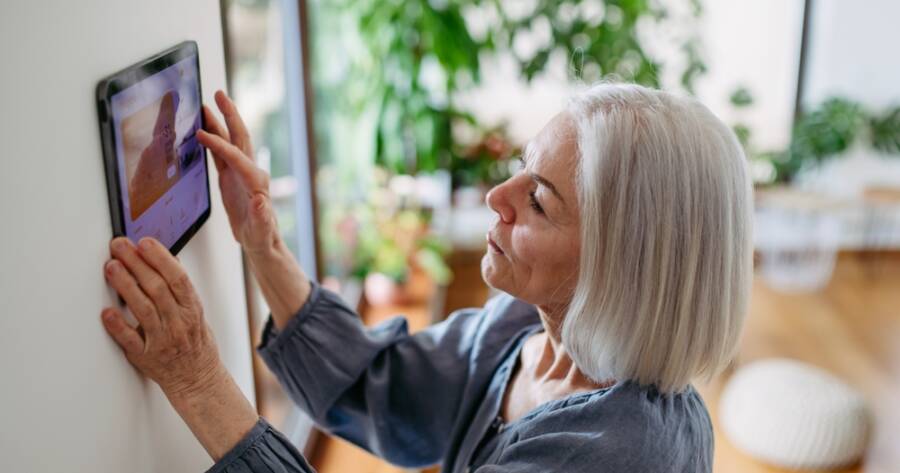As the push for sustainability continues to grow, many people are seeking innovative ways to reduce their energy consumption. While basic steps like turning off lights and unplugging unused devices are commonly known, there are more advanced strategies that can significantly cut energy costs. Explore cutting-edge energy efficiency hacks you can try today to make your home more energy-efficient and environmentally friendly.
Smart Home Devices for Energy Control
The rise of smart home technology has transformed how homeowners manage energy use. Smart thermostats, lighting systems, and appliances allow you to take control of energy consumption with just a few taps on your phone. These devices adjust automatically based on your preferences, occupancy patterns, and even weather conditions, making it easier to save energy without sacrificing comfort.
A smart thermostat, for example, can learn your schedule and adjust the temperature in your home based on when you’re awake, sleeping, or away. This prevents heating or cooling an empty house, which can lead to unnecessary energy consumption. Some advanced models even use local weather data to optimize temperature settings, ensuring you don’t waste energy on heating or cooling when the weather outside is mild.
Smart lighting systems can be programmed to automatically adjust based on the time of day or your activity. For example, lights can dim in the evening or turn off when no one is in the room. These systems are often controlled via apps, giving you complete oversight of your home’s lighting at all times.
Upgrade Your Insulation and Seal Gaps
While it may not be a new concept, upgrading insulation and sealing gaps remains one of the most effective energy efficiency hacks. Poor insulation and drafts can result in up to 30% of your heating and cooling energy being wasted. In 2025, however, there are more advanced options available for homeowners who want to take their insulation game to the next level.
Aerogel insulation is a newer material that has an impressively low thermal conductivity. While still relatively uncommon, aerogel is used to create ultra-thin, high-performance insulation. It’s great for areas where space is limited but energy efficiency is still a priority. If you’re renovating or building a new home, consider incorporating aerogel to maximize insulation without taking up too much space.
In addition, smart weather stripping can be used to seal gaps around windows and doors. This type of weather stripping automatically expands and contracts to form a tight seal, depending on the outside temperature. It’s a small investment that can make a big difference in reducing energy waste.
Solar-Powered Solutions for Your Home
Solar energy has become a popular way to reduce reliance on traditional power sources, but many people overlook the variety of solar-powered options now available. Beyond installing solar panels, there are a number of solar-powered devices that can help reduce energy consumption and lower your utility bills.
Solar-powered water heaters, for example, use the sun’s energy to heat your home’s water, reducing the need for electricity or gas. These systems are particularly beneficial for homeowners who live in areas with plenty of sunlight year-round. They can provide hot water for bathing, cleaning, and even heating your home during the colder months.
Another option is solar-powered outdoor lighting, which can eliminate the need for electricity to light up your garden or driveway. Modern solar lights are more efficient than ever, featuring built-in sensors that turn the lights on at dusk and off at dawn. By relying on solar energy for these outdoor lighting needs, you can significantly reduce your household’s overall energy consumption.
Energy-Efficient Appliances with Smart Features
In 2025, many major home appliances now come with energy-efficient ratings and smart features that optimize energy use. These appliances are designed to work more efficiently than older models, reducing energy consumption while maintaining top-notch performance. From refrigerators to washing machines, investing in energy-efficient appliances can pay off in the long run.
One cutting-edge technology is the use of induction cooktops, which are more efficient than traditional gas or electric stoves. Induction cooking uses magnetic fields to directly heat pots and pans, making it faster and more energy-efficient than conventional methods. Many induction cooktops now feature smart controls, allowing you to adjust the heat level precisely and reduce wasted energy.
Similarly, energy-efficient dishwashers with smart features can adjust water usage based on the load size and soil level of the dishes, ensuring that each cycle uses only the necessary amount of energy and water. Over time, these features add up to significant savings and reduced environmental impact.
Renewable Energy Options Beyond Solar
While solar power is one of the most well-known renewable energy sources, there are other ways to harness natural energy to power your home. One growing trend is wind energy, with small, residential wind turbines becoming more affordable and efficient. Homeowners in areas with consistent wind patterns can install a small turbine to generate electricity and reduce reliance on the grid.
Another renewable energy source gaining popularity is geothermal heating and cooling. Geothermal systems use the earth’s stable underground temperatures to heat and cool your home, offering an energy-efficient alternative to traditional heating and cooling methods. These systems can be particularly useful in areas with extreme temperatures and can lead to long-term savings.
Energy Efficiency is a Continuous Journey
As energy costs rise and environmental concerns intensify, adopting cutting-edge energy efficiency hacks is an essential step in creating a more sustainable home. From smart devices that control energy usage to solar-powered solutions and advanced insulation techniques, there are countless ways to reduce energy consumption and save money.
Remember, these improvements don’t just happen overnight, but with continued investment and awareness, they will pay off for years to come.

